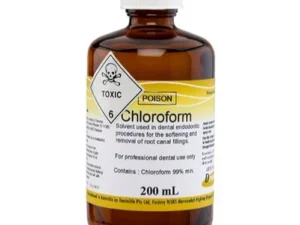Description
N-Methyl-2-Pyrrolidone (NMP): A Versatile Solvent Facing Scrutiny
N-Methyl-2-Pyrrolidone (NMP) is a powerful, polar aprotic solvent with a wide range of applications spanning industries from petrochemicals to pharmaceuticals. Its unique properties, including high solvency power, low volatility, and chemical stability, have made it a go-to choice for many processes. However, growing concerns regarding its potential reproductive toxicity have led to increased regulatory scrutiny and a push for safer alternatives.
The Allure of NMP: Why is it so Widely Used?
NMP’s versatility stems from its exceptional ability to dissolve a variety of materials, including polymers, resins, plastics, and even some metals. This makes it invaluable in numerous applications:
- Petrochemical Industry: Used as an extraction solvent in refining processes, separating valuable components from crude oil.
- Electronics Manufacturing: Crucial for cleaning and degreasing electronic components, as well as in photoresist stripping during semiconductor production.
- Pharmaceuticals: Employed as a solvent in drug formulation, facilitating the solubilization and delivery of active pharmaceutical ingredients.
- Paints and Coatings: Acts as a paint stripper and a solvent in specialized coatings, contributing to their performance and durability.
- Cleaning Applications: Found in industrial and consumer cleaners, effectively removing stubborn residues and contaminants.
This widespread adoption highlights NMP’s effectiveness and its historical role in improving efficiency across various sectors.
The Shadow of Toxicity: Concerns and Regulations
Despite its benefits, NMP has come under scrutiny due to its potential health hazards, primarily related to reproductive toxicity. Studies have linked exposure to NMP with adverse developmental effects in animals, raising serious concerns about its impact on human health, particularly for pregnant women and those of childbearing age.
These concerns have prompted regulatory bodies around the world to implement stricter regulations concerning the use of NMP. The European Union, for instance, has restricted its use in many applications and mandates the use of personal protective equipment to minimize worker exposure. Similar regulations are emerging in other regions, pushing industries to find safer alternatives.
The Quest for Alternatives: A Sustainable Future
The increasing regulatory pressure and the growing awareness of NMP’s potential health risks have spurred significant research and development efforts focused on identifying and implementing safer alternatives. These alternatives can be broadly categorized as:
- Other Solvents: Exploring the use of other solvents with similar properties but lower toxicity profiles, such as dimethyl sulfoxide (DMSO), ethyl lactate, and propylene carbonate.
- Aqueous Systems: Developing water-based formulations that can replace solvent-based processes, reducing the overall environmental impact.
- Alternative Technologies: Implementing innovative technologies that minimize or eliminate the need for solvents altogether, such as supercritical fluid extraction or electrochemical cleaning.
The choice of the optimal alternative depends heavily on the specific application. Factors like solvency requirements, cost-effectiveness, and compatibility with existing processes need careful consideration.
The Road Ahead: Balancing Performance with Responsibility
N-Methyl-2-Pyrrolidone remains a valuable solvent with unique properties that are difficult to replicate fully. However, the industry is moving towards a future where its use is minimized and carefully managed. This requires a multi-pronged approach:
- Increased Transparency: Providing comprehensive information about the potential risks associated with NMP exposure.
- Improved Handling Procedures: Implementing robust safety protocols to minimize worker exposure in existing applications.
- Continued Research and Development: Investing in the development and implementation of safer and more sustainable alternatives.
By embracing innovation and prioritizing worker safety and environmental responsibility, the industry can move towards a future where the benefits of solvent technology are balanced with a commitment to a healthier and more sustainable world. As regulatory landscapes evolve and scientific understanding deepens, the role of NMP will undoubtedly continue to be redefined, prompting a continuous search for safer and more responsible solutions.
















Reviews
There are no reviews yet.